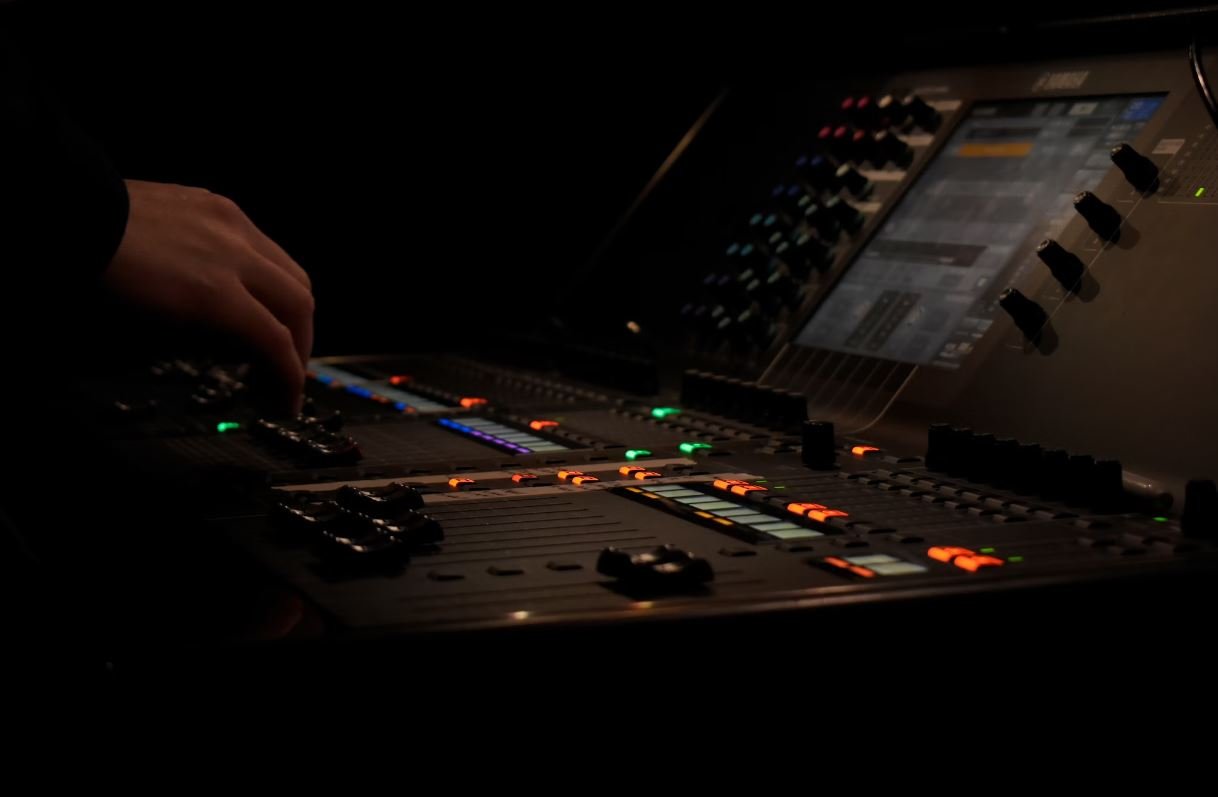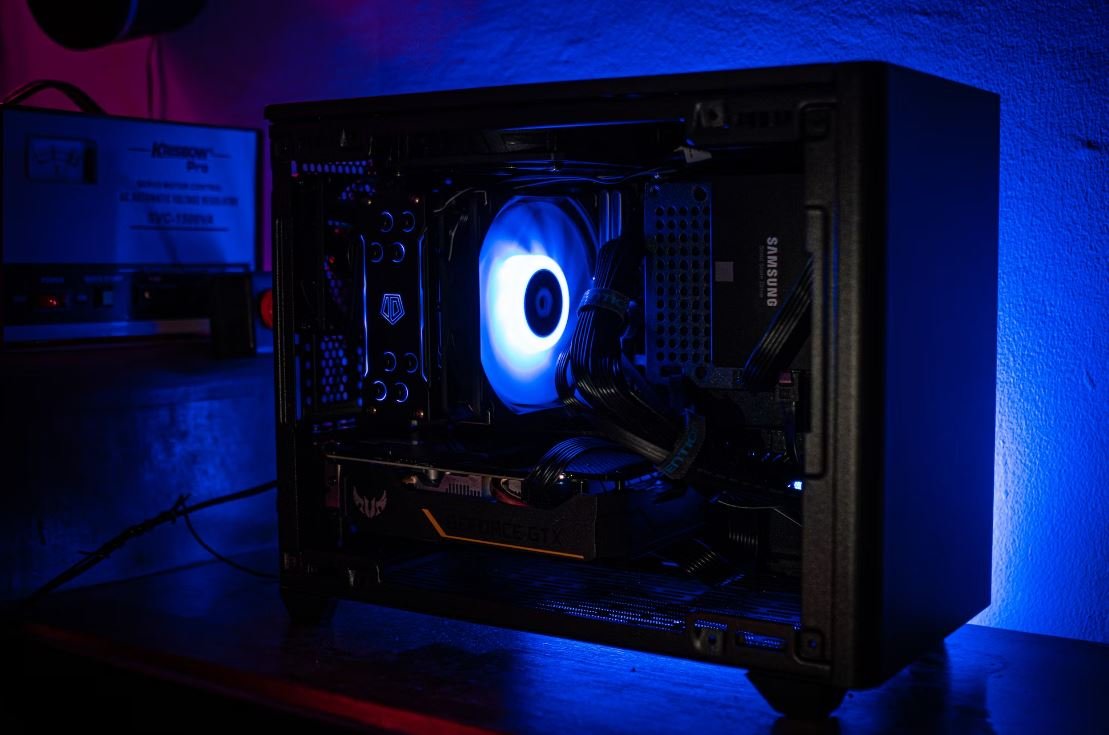Podcast Studio Equipment
Setting up a professional podcast studio requires the right equipment to ensure high-quality audio and a seamless recording experience. With the increasing popularity of podcasts, investing in top-notch gear is essential for podcasters serious about delivering engaging content to their audiences.
Key Takeaways
- Choosing the right podcast studio equipment is crucial for producing high-quality audio.
- Investing in a good microphone and headphones improves sound clarity and reduces background noise.
- Acoustic treatment, such as sound panels, helps eliminate echoes and reverberations in the recording environment.
- Audio interfaces and mixers enable control over audio levels and input/output connections.
The Essentials
To set up a podcast studio, there are a few essential pieces of equipment that every podcaster needs:
- A microphone: Look for a microphone that suits your recording style and preference. Microphones can be USB or XLR, and it’s important to consider factors like sensitivity and directional patterns when selecting one. *Investing in a high-quality microphone significantly enhances audio clarity.*
- A pair of headphones: Quality headphones are crucial for monitoring audio during recording and editing. Choose a pair that provides accurate sound reproduction and blocks out external noise. *Good headphones allow the podcaster to catch subtle audio imperfections.*
- Pop filters: These devices help reduce plosive sounds (pops) caused by strong bursts of air hitting the microphone. They are positioned in front of the microphone to minimize unwanted noise. *Pop filters are designed to take the “pop” out of podcasting.*
| Types of Microphones | |
|---|---|
| USB Microphone | XLR Microphone |
| Plug-and-play convenience | Greater flexibility and compatibility |
| Simple setup | Requires an audio interface or mixer |
| Usually more affordable | Offers higher audio quality |
Advanced Equipment
For podcasters looking to take their studio setup to the next level, there are some advanced equipment options available:
- An audio interface: This device connects microphones and other audio sources to the recording system. It provides better sound quality and more control over audio input and output levels, allowing for professional-grade recordings. *An audio interface is a must-have for achieving optimum sound quality.*
- A mixer: Mixers are helpful when multiple microphones or audio sources need to be managed simultaneously. They allow for real-time control over audio levels, EQ settings, and effects. *Using a mixer adds versatility and customization options to your podcast production process.*
- Acoustic treatment: Sound panels, bass traps, and diffusers are used to treat the recording space by reducing unwanted echoes, reverberations, and external noises. This helps create a more controlled and professional recording environment. *Proper acoustic treatment ensures clean and clear audio recordings.*
| Type of Equipment | Benefits |
|---|---|
| Audio Interface |
|
| Mixer |
|
| Acoustic Treatment |
|
Conclusion
In order to produce a high-quality podcast, investing in appropriate studio equipment is essential. The right microphone, headphones, and additional tools like audio interfaces and acoustic treatment can elevate the overall audio production, creating an engaging experience for listeners. Take the time to research and choose equipment that suits your specific needs and recording style.

Common Misconceptions
Paragraph 1
One common misconception people have about podcast studio equipment is that you need to invest in expensive and professional-grade gear to produce high-quality podcasts. While professional equipment can enhance the overall audio quality, it is not a necessity to get started. Many podcasters have successfully recorded and published podcasts using affordable, entry-level microphones and basic audio recording software.
- High-quality podcast production can be achieved without expensive gear.
- Affordable microphones and recording software can deliver satisfactory results.
- Investing in professional-grade equipment is a personal choice and not a mandatory requirement.
Paragraph 2
Another misconception is that using a large number of microphones and complex audio mixers will automatically improve the podcast’s quality. In reality, the number of microphones needed depends on the format of your podcast and the number of participants. Using multiple microphones can help capture individual voices more accurately, but it does not guarantee better content or engagement with your listeners. It is essential to focus on the quality of your content and delivery rather than solely relying on the number of microphones or advanced audio mixers.
- The number of microphones required depends on the podcast format and number of participants.
- Content quality and delivery are more critical than the number of microphones.
- Complex audio mixers aren’t necessary for producing engaging podcasts.
Paragraph 3
One often misunderstood aspect is that having a soundproof studio is necessary for recording a podcast. While soundproof studios can help eliminate outside noise and improve audio clarity, they are not a prerequisite for every podcast. Many successful podcasts are recorded in home offices, spare rooms, or other rooms with minimal soundproofing. By strategically placing microphones, using noise-reducing software plugins, and optimizing your recording environment, you can achieve good audio quality without the need for a dedicated soundproof studio.
- A dedicated soundproof studio is not essential for recording podcasts.
- Strategically placed microphones and noise-reducing software can mitigate external noises for better audio quality.
- Optimizing your recording environment can significantly improve audio clarity without soundproofing.
Paragraph 4
Many people mistakenly believe that you need to have extensive technical knowledge or audio engineering skills to set up and operate a podcast studio. While having technical expertise can be beneficial, it is not a prerequisite. There are numerous user-friendly podcasting platforms and tutorials available online that can guide you through the process of setting up and operating a podcast studio with ease. With a little research and practice, anyone can learn the basics of podcast production and start recording their own shows.
- You don’t need extensive technical knowledge to set up a podcast studio.
- User-friendly podcasting platforms and tutorials are available to assist in the setup process.
- Basic research and practice can help anyone grasp the basics of podcast production.
Paragraph 5
A common misconception is that podcast studio equipment needs constant upgrading to keep up with technology advancements. While technology continues to evolve, it is not necessary to upgrade your equipment constantly. Investing in reliable, durable equipment that meets your current needs can serve you well for a long time. Spending excessive amounts on equipment upgrades without a valid reason can be a waste of resources. Focus on creating valuable content and engaging with your audience instead of constantly chasing the latest gadget or audio technology.
- Constantly upgrading podcast studio equipment is not required.
- Investing in reliable equipment that meets your needs can be more beneficial in the long run.
- Focusing on content creation and audience engagement should take precedence over equipment upgrades.

Recommended Podcast Studio Equipment
Setting up a podcast studio can be an exciting endeavor, but it’s crucial to have the right equipment to ensure high-quality recordings. From microphones to headphones and mixing boards, each piece plays a vital role in delivering a professional podcasting experience. Here are ten essential devices and accessories to consider when building your podcast studio:
Microphones Comparison
Choosing the perfect microphone is key to capturing clear and crisp audio. Consider these popular microphones for your podcast studio:
| Microphone Model | Frequency Response | Price Range | Popularity |
|——————|——————–|————-|————|
| Shure SM58 | 50Hz-15kHz | $99-$200 | Very Popular |
| Audio-Technica ATR2100x | 50Hz-15kHz | $100-$150 | Increasingly Popular |
| Rode Procaster | 75Hz-18kHz | $200-$300 | Popular among professionals |
Recording Software Comparison
Recording software helps you capture and edit your podcast episodes effectively. Explore these options to find the right fit for your studio:
| Software Name | Price | Features | Ease of Use |
|—————|——-|———-|————-|
| Adobe Audition | $20.99/month | Professional editing tools, multi-track support | Intermediate |
| GarageBand | Free (Mac only) | Intuitive interface, basic editing features | Beginner |
| Audacity | Free | Open-source, extensive audio effects | Beginner-Intermediate |
Headphones Comparison
Comfortable and reliable headphones are crucial for monitoring audio during podcast recordings. Check out these headphone options:
| Headphone Model | Frequency Response | Price Range | Comfort Level |
|—————–|——————–|————-|—————|
| Sony MDR7506 | 10Hz-20kHz | $100-$150 | Very Comfortable |
| Audio-Technica ATH-M50x | 15Hz-28kHz | $150-$200 | Comfortable, with sound isolation |
| Sennheiser HD 280 Pro | 8Hz-25kHz | $100-$150 | Comfortable for long sessions |
Audio Interface Comparison
An audio interface allows you to connect microphones and other audio equipment to your computer. Here are a few options to consider:
| Audio Interface Model | Price Range | Inputs | Outputs |
|———————–|————-|——–|———|
| Focusrite Scarlett 2i2 | $150-$200 | 2 | 2 |
| PreSonus AudioBox USB 96 | $100-$150 | 2 | 2 |
| Behringer U-Phoria UM2 | $50-$100 | 1 | 1 |
Boom Arms Comparison
Boom arms provide adjustable microphone positioning, enabling optimal sound capture. Consider these boom arms for your studio:
| Boom Arm Model | Compatibility | Price Range | Length |
|—————-|—————|————-|——–|
| Heil Sound PL-2T | Microphone Mount | $100-$150 | 40 in |
| Rode PSA1 | All standard shock mounts | $80-$120 | 33 in |
| Samson MBA38 | Microphone Mount | $40-$70 | 38 in |
Pop Filters Comparison
Pop filters minimize plosive sounds during recordings, improving audio quality. Look into these pop filters:
| Pop Filter Model | Compatibility | Price Range | Diameter |
|——————|—————|————-|———-|
| Aokeo Professional Microphone Pop Filter | All standard microphones | $10-$20 | 6 in |
| Neewer NW(B-3) | All standard microphones | $5-$10 | 5 in |
| Stedman Proscreen XL Pop Filter | All standard microphones | $30-$50 | 6 in |
Studio Monitors Comparison
Studio monitors provide accurate audio playback, allowing you to gauge sound quality effectively. Check out these studio monitors:
| Studio Monitor Model | Frequency Response | Price Range | Power Output |
|———————-|——————–|————-|————–|
| Yamaha HS5 | 54Hz-30kHz | $300-$400 | 70W |
| KRK Rokit 5 G4 | 43Hz-40kHz | $200-$300 | 100W |
| JBL 305P MkII | 43Hz-24kHz | $200-$300 | 82W |
Acoustic Treatment Options
Proper acoustic treatment improves sound quality by reducing echo and minimizing background noise. Consider these options for your podcast studio:
| Acoustic Treatment Option | Price Range | Function | Installation |
|————————–|————-|———-|————–|
| Auralex Acoustics Studiofoam Panels | $50-$100 (per pack) | Absorptive foam panels | Easy, adhesive or hanging |
| Portable Vocal Booth | $100-$200 | Isolates microphone for cleaner recordings | Portable, minimal setup required |
| Bass Traps | $50-$100 (per trap) | Reduces low-frequency reflections | Requires corner placement |
Cable Management Solutions
Keeping cables organized enhances the efficiency and appearance of your podcast studio. Explore cable management options:
| Cable Management Solution | Price Range | Capacity | Installation |
|—————————|————-|———-|————–|
| Cable Raceway Kit | $20-$50 (per kit) | Multiple cables | Easy, adhesive or screw-mount |
| Velcro Cable Ties | $5-$10 (per pack) | Multiple cables | Easy, reusable |
| Cable Clips | $5-$10 (per pack) | 1-2 cables | Easy, adhesive-backed |
By selecting the right combination of equipment, your podcast studio will be well-equipped for professional-grade recordings. Consider the factors that best align with your needs, budget, and desired sound quality, ensuring an enjoyable podcasting experience for both you and your audience.
Frequently Asked Questions
Podcast Studio Equipment
What are the essential equipment needed for a podcast studio?
Which type of microphone is best for podcasting?
Should I use wired or wireless headphones for podcasting?
What is the purpose of an audio interface in a podcast studio?
When should I use a mixer in my podcast setup?
Why do I need a shock mount for my microphone?
What is the purpose of a pop filter in podcasting?
Why should I use XLR cables instead of USB cables?
Can I use a smartphone as a recording device for podcasting?
What other equipment should I consider for my podcast studio?


Leave a Reply